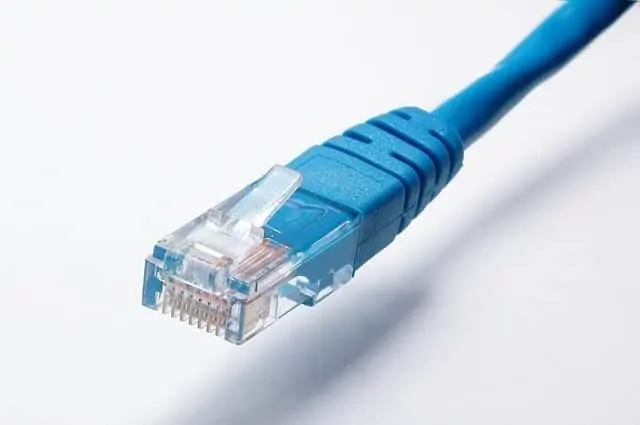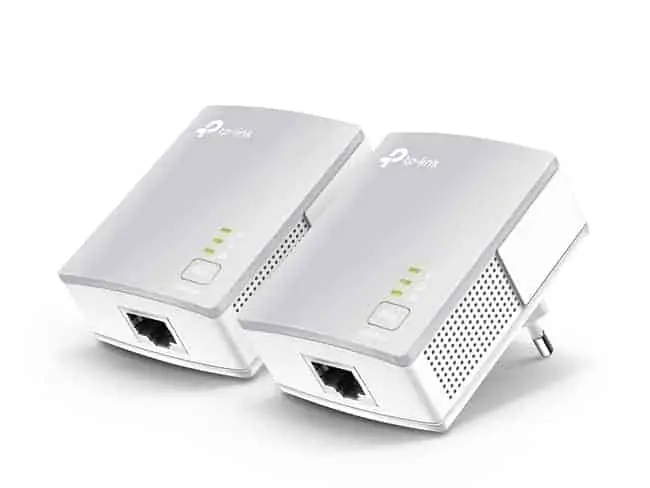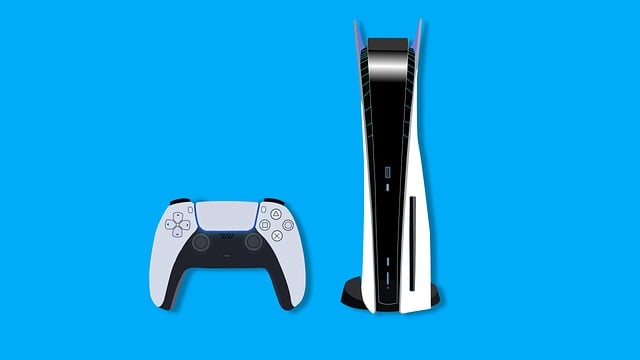Some links in this article are affiliate links and I may receive a small commission from purchases made off them at no extra cost to the reader.
The PlayStation 5 released several years ago now to great anticipation as always with new generation games consoles, and to accompany the release we want to produce a definitive guide on how to reduce latency (also known as lag or ping) on this console.
Despite it being an entirely new piece of technology with many advancements over it’s predecessor, the same general principles apply regarding how to reduce lag to all gamers and all games consoles.
We already produced an old guide on reducing lag for the PS4; we’ll try to present the same information here in a more concise form, since all of it carries over to the both consoles, plus add any new tips relevant to new gen that become apparent as it is more used.
But the same general networking principles apply
Here are the main ways to reduce lag on the PS4/PS5:
- Always use a wired connection instead of Wi-Fi.
- Reset and update your router and console.
- Delete any files/games you don’t need to free up space.
- Restore default settings or rebuild database in Safe Mode.
- Use QoS settings to prioritize the PS5 on busy networks.
- Use DMZ settings for Open NAT.
- Play against gamers closer to your geographically.
- Plug controllers in to reduce input lag.
- Use a gaming monitor to reduce input lag.
- Use high quality HDMI cables.
Let’s cover these tips, plus some others, in more detail, one by one.
Always Use Wired Connections When Possible.
Of all the steps we cover in this guide, this one if the most fundamental, for all gamers regardless of platform.
Always seek to use a wired connection when possible for online gaming. It is just better, more stable and more reliable than Wi-Fi, with lower ping and better speeds.
No doubt the Wi-Fi technology in the PS5 will be better than it’s predecessors – it always is – but Wi-Fi is still Wi-Fi, and will always be less reliable than a wired connection no matter what Sony does with it’s technology.
So always try to use a wired ethernet connection if possible.

If you are a long way from the router and cannot run a LAN cable directly, then a powerline adapter can be a good way to basically achieve the same result and keep ping down.
These consist of a pair of adapter plugs; you install one in a wall socket and connect it to your router; you install the other and connect it to your PS5. The two plugs then communicate through the electrical wiring of the house to deliver a wired connection to the receiving end.
They can be a clever way of bypassing Wi-Fi altogether and getting onto a wired connection, even if you are a long way from the router and don’t want to run a long cable directly.
See the video below for a quick demonstration of how powerline adapters work.

Click here to view the TP Link Nano Powerline Adapter, on Amazon (affiliate link). See our powerline page for more advanced models.
Performance is not absolutely guaranteed in all houses, but when they do work, then can deliver virtually identical ping as when plugged in directly with ethernet, and can be a good alternative for gamers who would otherwise have to stay on Wi-Fi.
Bottom line – to reduce lag, gamers should always get on a wired connection, either directly or by powerline, rather than use Wi-Fi, and the PS5 will be no different.
Do Some Reboots, Resets & Updates
This is again a general networking principle that will also apply to the PS5. Try quick resetting your router and PS5 (Power Options), to refresh the connection.
You can try also a complete power cycle of them, fully turning them off and unplugging them for 5 minutes, and then rebooting them.
Also make sure that your PS5 is fully up to date with the latest version.
Go to Settings…..System Software Update to check for any new firmware versions, and update if available.
Taking all these quick steps can be a good way to refresh the settings and connection of your console, which can in some case fix connection issues which can be causing lag when playing online.
Some slightly more advanced tips are to use some Safe Mode settings as per the PS4 – restoring default settings and rebuilding the database.
Presumably, the process for accessing Safe Mode will be the same for the PS5. Press and hold the power button on the console for several seconds to boot it up in Safe Mode. Then choose from one of the following options, if available, to clean up the settings and SSD:
- Restore Default Settings – Will wipe all settings to their original state, so will lose any custom configuration, but not any saved or game data.
- Rebuild Database – Will do a full group-up rebuild of the database on the console to fix any errors. Will take longer but won’t delete any data.
- Full Re-initialization – Will take longer and will delete all files. Last resort option. Back up anything you don’t want to lose.
Clean Up the PS5 Hard Drive
This is again something which is a useful tip for all gamers on all consoles. Sometimes having a hard drive/SSD that is too clogged up can reduce performance, including network performance.
It is a good idea to delete any games and data which you aren’t using anymore to free up space. Go to Settings and Storage options to do this, like the PS4.
Also try combining this with the Rebuild Database option we covered above, to fully freshen up the storage space on your PS5.
Also, having a console that is too hot can also reduce performance. Make sure the PS4 console is adequately cooled; this may mean turning it off for a while to let it cool down.
Use Quality of Service (QoS) Settings on Busy Home Networks
This is another under-utilized home networking option, especially useful for gamers struggling with lag the most when their home network is busy, with lots of people trying to connect to the same network for browsing/streaming/downloading when they are also trying to play online.
You may notice the lag is particularly bad at peak use times, which is when a setting like QoS can come in handy.
QoS is a setting available on some (not all) routers that can tell your router to prioritize gaming traffic on your home network, handling gaming traffic requests first before anything else, to keep latency down.
We have already covered extensively how to set QoS for the PS4 if available; the general process for the PS5 will be exactly the same.
Here are the quick step for setting QoS:
- Find the MAC address of your PS5 in Connection Settings/Status
- Log into your router (type 192.168.0.1 or 192.168.1.1 into any browser, plus the router password)
- Find QoS Settings if they are available
- Select your PS5 using the MAC address you found earlier.
- Set the priority to Highest or Maximum.
- QoS is not available on all routers.
- See our full article on QoS for more detailed steps.
This can be a clever little setting to help out gamers if their ping keeps creeping up when other people are also using the internet at home.
When configured correctly, it is as though you are the only one of your home network, even if you aren’t.
See the video below for a demonstration of QoS in action to reduce lag for gaming.
Use DMZ Settings For an Optimal Connection
The new generation consoles like the PS5 will be IPv6 compatible, which is a superior form of connectivity to the current IPv4, and should drastically improve end to end connections and reduce lag.
However, the catch is that to use IPv6, every single device on the network – the routers and consoles at each end – all need to be IPv6 enabled. We aren’t quite at this point yet – there is still a mixture of IPv4 and IPv6 connectivity for the time being.
Therefore, anyone still using IPv4 should aim for an Open NAT Type for the best possible connection to other gamers online to keep ping low, and reduce lobby and party chat issues.
This involves using some form of port forwarding, and while there are many ways to do it, the simplest is DMZ, which automatically applies port forwarding and puts you on Open NAT, for the best connection to the wider internet.
DMZ for gaming just means placing your games console in specific zone of the router which removes all firewall filtering and opens it fully up to the internet for the best possible connection to other gamers.
This can be especially useful if you have regular weak connections, party chat, lobby and NAT Type issues that affect your connections to other gamers.
Here are the quick steps for DMZ:
- Get the MAC address of your PS5 (Connection Settings/Status).
- Log into your router by typing it’s IP address in any browser (often 192.168.0.1 or 192.168.1.1) and the password.
- Find DMZ Settings under Security or Advanced or similar.
- Enter or select your PS5’s MAC address and to place it in the DMZ.
- Save settings and close.
- See our full article on DMZ for more detailed steps.
The process isn’t always this simple, but can be an effective way to get rid of pesky connection problems caused by excessive firewall filtering or other restrictive settings on your home network that can add to lag problems.
Reducing Input Lag on the PS5
This is another less known area where serious gamers can reduce lag, and it is more to do with the delay between your controller and the screen, rather than the console to the router.
- Always plug your controller into the console itself rather than using it wirelessly/Bluetooth.
- Make sure you are using a high quality HDMI cable from your console to your TV, preferably 2.1 spec, for maximum refresh/Hz rates. The Zeskit 8K Ultra HDMI Cable from Amazon (affiliate link) is extremely well reviewed, but there are plenty of others as well.
- Really serious gamers who want to shave off every millisecond of ping can also consider a gaming monitor that has a good frames per second (FPS) rate and reduces input lag.
- As a side note, you don’t need to upgrade all your TV and equipment to play the PS5. Sony have made it clear that you can enjoy the PS5 with all your current TV/cables, as long as they are HDMI compatible. But it’s a good idea to get the best gear that you currently can with your budget.
DNS Settings Changes (Does it Make a Difference?)
We thought we’d include this one as it’s such a common claim now among gamers. Does changing your DNS servers really reduce lag for online gaming? Will it help on the PS5?
This is something we’ve covered extensively on this site; see our article on whether DNS changes for the PS4 really reduce lag.
While it still needs to be tested more for the PS5 because it is so new, the bottom line answer for this is that people who have rigorously tested this before have found that it makes no difference to ping for online gaming.
Moreover, this is more a general networking principle rather than a pure gaming one, so it shouldn’t be any different for new gen consoles like the PS5. DNS settings changes shouldn’t make a difference in reducing lag.
Nevertheless, DNS settings changes can sometimes improve download/upload speeds for some users, which can help with patch/game downloads, streaming and uploading. This is a separate measure to ping though, and beyond a bare minimum, bandwidth shouldn’t really make a difference to lag for online gaming. Ping usually needs to be optimized in different ways.
If you do want to experiment with DNS server changes, then here are the general steps:
- Go to Settings….Network……Set Up Internet Connection
- Select Wi-Fi or LAN depending on what you’re using.
- Select your network, then press the Start button on your controller, than Advanced Settings
- For DNS, switch to Manual
- Input your own manual pair of DNS servers. Here are some popular ones:
-
- Google DNS: Primary 8.8.8.8 Secondary 8.8.4.4
- Cloudflare: Primary 1.1.1.1 Secondary 1.0.0.1
- OpenDNS: Primary 208.67.222.222 Secondary 208.67.220.220
-
- Press OK to finish setup and test connection to see if speeds improve
Testing Lag/Ping on the PS5
It’s also important to be able to test ping on the PS5, to check whether any changes are making a difference.
The PS5 connection test tool should ideally be updated to measure ping as well as download/upload speeds (Settings…Network….Test Internet Connection).
The PS5 does also have an internet browser, so you can launch it and move over to some ping test tools to try it out.
Try the pingtest and speedtest tools to check for “before and after” ping measurements. It’s best to do it on the actual PS5 itself and not on other devices, because they may not give an accurate measurement of what’s going on your console, even if they are connected to the same network. Always test ping on the device that is actually being used if possible.
